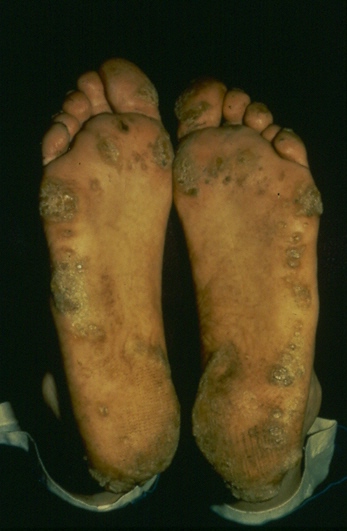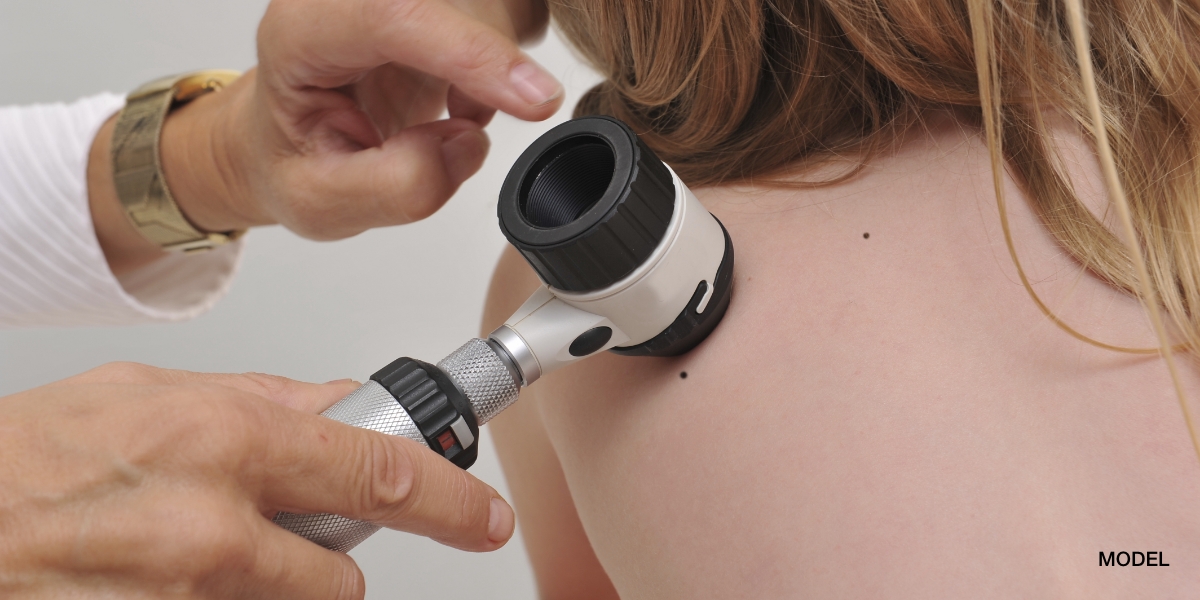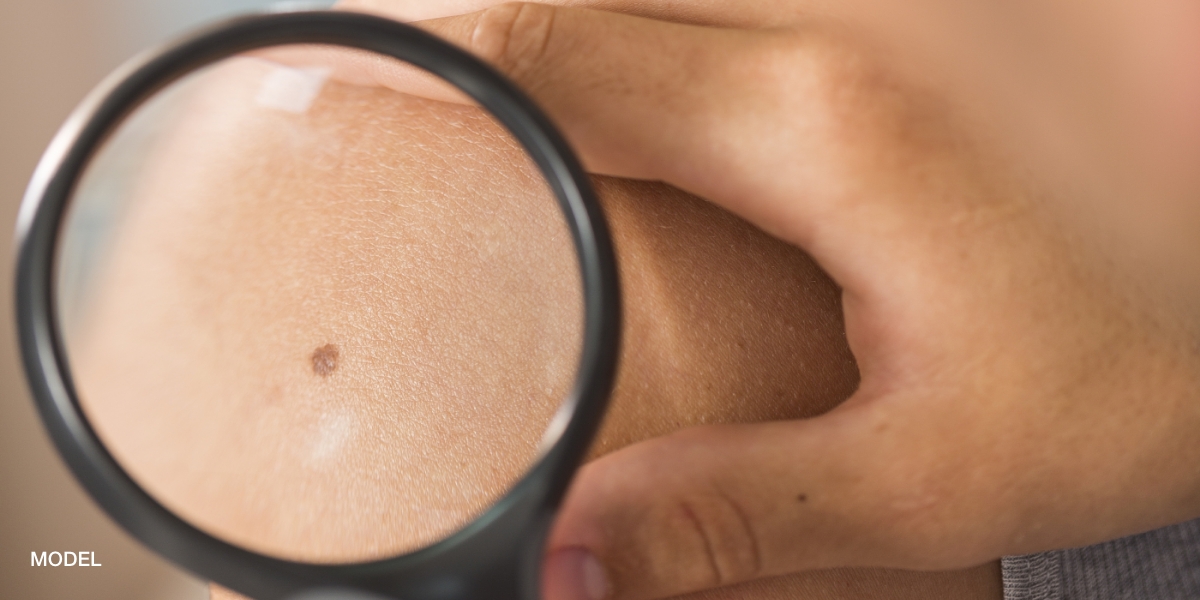Arsenical Keratoses occur as lesions on the palms and soles that have a small pit in the skin with a central hyperkeratotic core that I occasionally encounter in my The Woodlands dermatology and Conroe dermatology offices. Arsenical Keratoses occur in patients who have been exposed to arsenic either through well water containing arsenic or through medications containing arsenic such as Fowler’s solution or Bell’s Asthma mixture which were used in the past to treat asthma, eczema, and psoriasis. In patients exposed to arsenic in well water, a latency period of 20 years exist before the arsenical keratoses can develop into squamous cell cancers. In patients exposed to medicines with arsenic, the same 20 year latency period exists but it is more common that basal cell cancers arise from the arsenical keratoses. Patients with Arsenical Keratoses are also at increased risk of internal cancers such as lung cancer and genitourinary cancer after a 30 year latency period. Arsenical Keratoses are commonly treated with liquid nitrogen destruction or electrodessication and curretage and occasionally 5 fluouracil cream.





